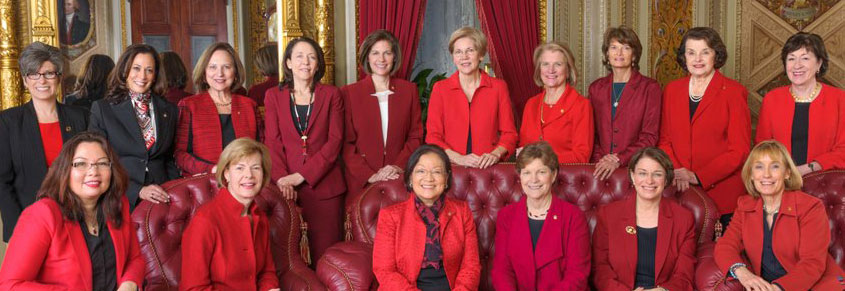Women are signing up to run for office in record numbers. In this new column, we consider what this could mean for their districts, and for our country.
This article was made possible because of the generous support of DAME members. We urgently need your help to keep publishing. Will you contribute just $5 a month to support our journalism?
We’ve all been reading a lot about the new upswing in women eager to run for elected office or consider political training to eventually consider campaigning. This is exciting, welcome news. It also deserves a closer look at which women are running, why, and what their platforms are.
It’s important to understand the broader context of this swell in female candidacy, too: Why exactly does it matter that more women are running? Most of us probably know some of the more harrowing statistics about women’s representation in electoral politics. Even though women comprise more than half the U.S. population—50.8 percent at last tally by the U.S. Census Bureau—we make up a disproportionately small percentage of elected officials.
The numbers can be daunting, especially when written out in list form. Here are a few particularly striking figures as of January 2017:
– Only 18.8 percent of mayors in cities with more than 300,000 residents are women.
– Women hold just 10 percent of governorships.
– Women occupy less than 25 percent of elected offices.
That last stat is the one that makes me draw a quick breath of alarm, no matter how many times I look at it or say it aloud. It feels as though this is an urgent problem in need of a name, and one of countless gender-specific crises simmering as long as we’ve been on this planet—every last one of us alive right now. It’s not a stretch to believe unequal representation is also at the heart of other forms of inequality, whether it’s unequal access to basic health care or the punitively restricted rights of incarcerated mothers.
This is the problem that, in addition to trying to name, I will attempt to highlight in this new regular column, “She Is Running.” Since the 2016 presidential election—there is seemingly no way to write about this topic without mentioning the Republican elephant in the room, if not its routinely dispiriting and occasionally hopeful aftermath—newer nonpartisan organizations such as She Should Run have enjoyed heightened visibility and support, and received thousands of registrations compared to the few hundred of a typical pre-2016 month. Stalwart Democratic women’s leadership orgs such as EMILY’s List have seen sharp upticks in women seeking advice and support as they consider running for office for the first time.
“EMILY’s List has heard from a historic 17,000 women and counting since Election Day who are looking at running for office,” says EMILY’s List press secretary Alexandra De Luca. “We’ve never seen anything like this before in our history. Women are fired up and ready to fight back—and they know that one of the best ways to do that is to step up and run for office.”
So why does it matter if more women run for office? One obvious argument that shouldn’t really bear repeating is that greater and more equitable representation means laws will be made by people from a wider, more diverse array of backgrounds and experience, which in turn more fairly protects a diverse voting populace. The need to more obviously represent a candidate’s entire constituency translates to a more nuanced lawmaking process and laws that enhance the lives of more citizens. Most political issues are really basic rights masquerading as divisive topics—look no further than healthcare or the environment, two inextricably linked issues that impact every single one of our daily lives. To elect a more representative sample of the population to legislate around these issues for us all is to protect not just ourselves, but the generations to follow.
These are some of the topics you’ll see highlighted here as we travel the nation, meeting grassroots candidates new to politics, and women in established leadership roles who now view running for political office as intriguing as it is vital to the republic. Women in other nations have succeeded where, hopefully, we will soon follow suit. Iceland, long known for its gender balance in parliament and across its political sphere, elected 30 women candidates to fill its 63 parliamentary seats in October 2016. In June 2017, a record number of women were elected to British Parliament.
In the months ahead, we’ll meet women running for office across the nation. We’ll focus on the stories of compelling candidates running for state representative, governor, and U.S. Congress—and of course, we’re open to suggestions. If you want to refer a candidate or make the case for interviewing a prominent mayoral candidate, get in touch at sheisrunning@damemagazine.com.
